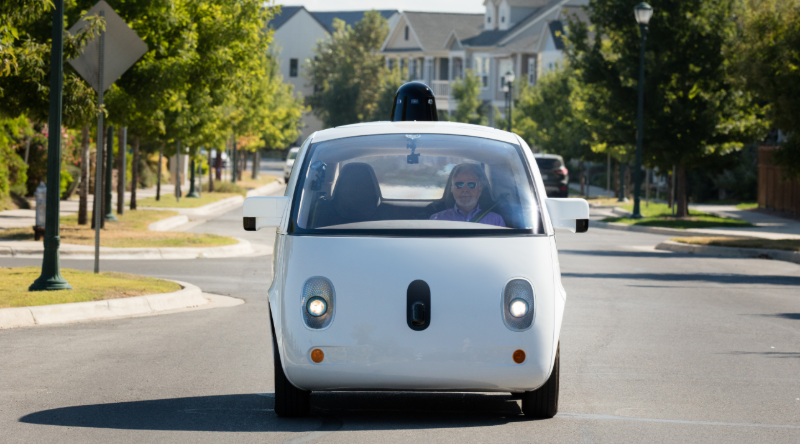On Thursday, June 26th, the House Energy & Commerce Committee Subcommittee on Commerce, Manufacturing, and Trade held a hearing titled, “Looking Under the Hood: The State of NHTSA and Motor Vehicle Safety.” The entire hearing is available on YouTube, and you can find live “tweets” on Bluesky.
The League believes that it is an incredibly important time for the National Highway Traffic Safety Administration (NHTSA) and motor vehicles to contribute to improving the safety of people biking. According to the most recent data published by NHTSA, 2023 saw more bicyclists killed than in any year before. Early 2024 data estimates that for only the fourth time ever, more than 1,000 bicyclists were killed on American roads.
Since an all-time low in 2010, bicyclist deaths have almost doubled with many pointing a finger at increasing vehicle size, weight, horsepower, and driver distraction. At the same time, vehicles are safer than ever for their occupants and increasingly capable of preventing harm to people outside the vehicle with technologies like Automatic Emergency Braking (AEB).
In the League’s Statement for the Record, we emphasize the need for congressional action and encourage Congress to pass H.R.3649 — the Magnus White Cyclist Safety Act of 2025, which requires NHTSA to adopt a bicyclist-AEB Federal Motor Vehicle Safety Standard (FMVSS) within three years. Without congressional action, there will be no public testing of bicyclist-AEB by NHTSA until the end of 2027 and crash scenarios currently tested by EuroNCAP will not be tested until at least 2030.
In the hearing, there was general agreement that too many people are killed on America’s roadways and that NHTSA struggles to be an effective regulator. There was less agreement about what to do to reduce the number of people killed and make NHTSA more effective. There was some focus on more traditional ways to improve safety — “Click it or Ticket” campaigns, vehicle safety standards and testing through the New Car Assessment Program, and data collection — but an equal or greater focus on automated vehicles (AV) as a potential solution, and the need for a federal framework to accelerate their deployment.
It would be easy to say that there is agreement about the need for a federal automated vehicle framework, but that glosses over large differences about what that means. “Framework” is notably flexible so that it can mean regulation but doesn’t necessarily mean regulation. Witnesses from the automotive and automated vehicle industries emphasized the need to exempt AVs from FMVSS that don’t make sense for vehicles without a human driver, such as gas and brake pedals, steering wheels, and other elements of the human-machine interface. Witnesses from traffic safety organizations emphasized the need for capacity and staffing at NHTSA to research, test, and implement standards for the safety of AVs. For the industry, it seems a framework without regulation is acceptable, but members of Congress and safety advocates pressed hard on the need for some assurance that AVs are safe through regulation.
The League’s legislative priority for a federal AV framework is a “vision test” requiring minimum performance standards for sensors and perception so that there is an objective minimum safety standard for detecting, identifying, and responding to a vulnerable road user. While we likely disagree on timing, it was great to see the Automated Vehicle Industry Association’s preferred framework support “’a rulemaking on a Federal Motor Vehicle Safety Standard (FMVSS) … to require a core set of Autonomous Driving System (ADS) behavioral competency tests including ‘Detection and response to relevant road users, including vulnerable road users.’” Hopefully, this is a sign that some version of our preferred standard will be included moving forward.
The hearing had good questions from both sides of the aisle, but rather than looking under the hood of NHTSA, most time was spent looking towards technology that NHTSA currently does not regulate. If you’re a pessimist, it’s as if they focused on the new sensors in the vehicle’s bumper and forgot to address the engine bay being empty. If you’re an optimist, then that empty engine bay is going to get a shiny new drivetrain fueled by AI and your wildest dreams. However you look at it, it is clear that NHTSA will be asked to do new things and it is less than clear that it can do them.
Article from the League of American Bicyclists. By Ken McLeod.
Sign up for CleanTechnica’s Weekly Substack for Zach and Scott’s in-depth analyses and high level summaries, sign up for our daily newsletter, and follow us on Google News!
Whether you have solar power or not, please complete our latest solar power survey.
Have a tip for CleanTechnica? Want to advertise? Want to suggest a guest for our CleanTech Talk podcast? Contact us here.
Sign up for our daily newsletter for 15 new cleantech stories a day. Or sign up for our weekly one on top stories of the week if daily is too frequent.
CleanTechnica uses affiliate links. See our policy here.
CleanTechnica’s Comment Policy

